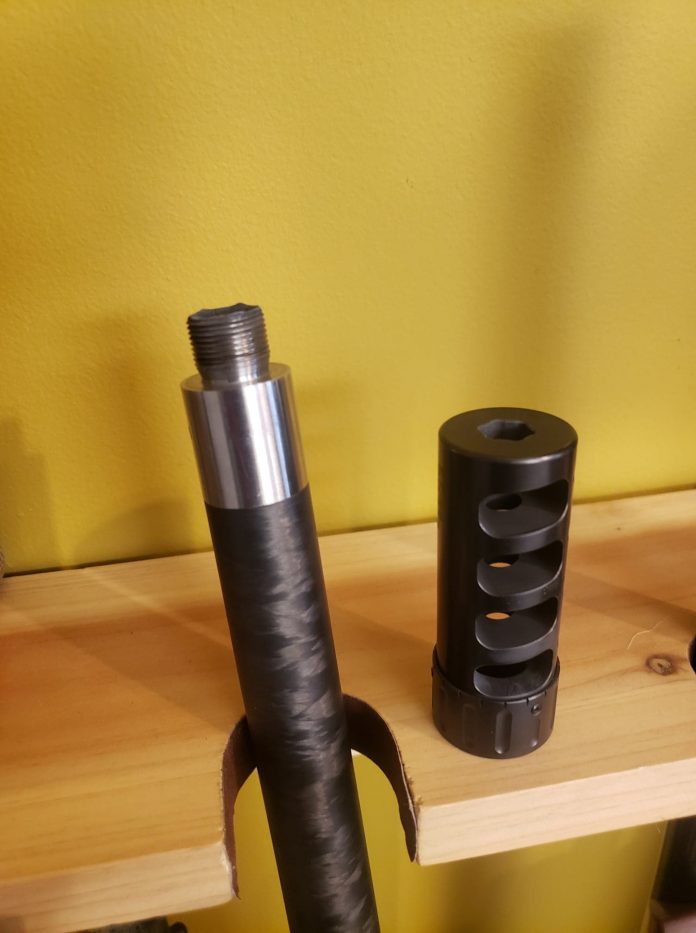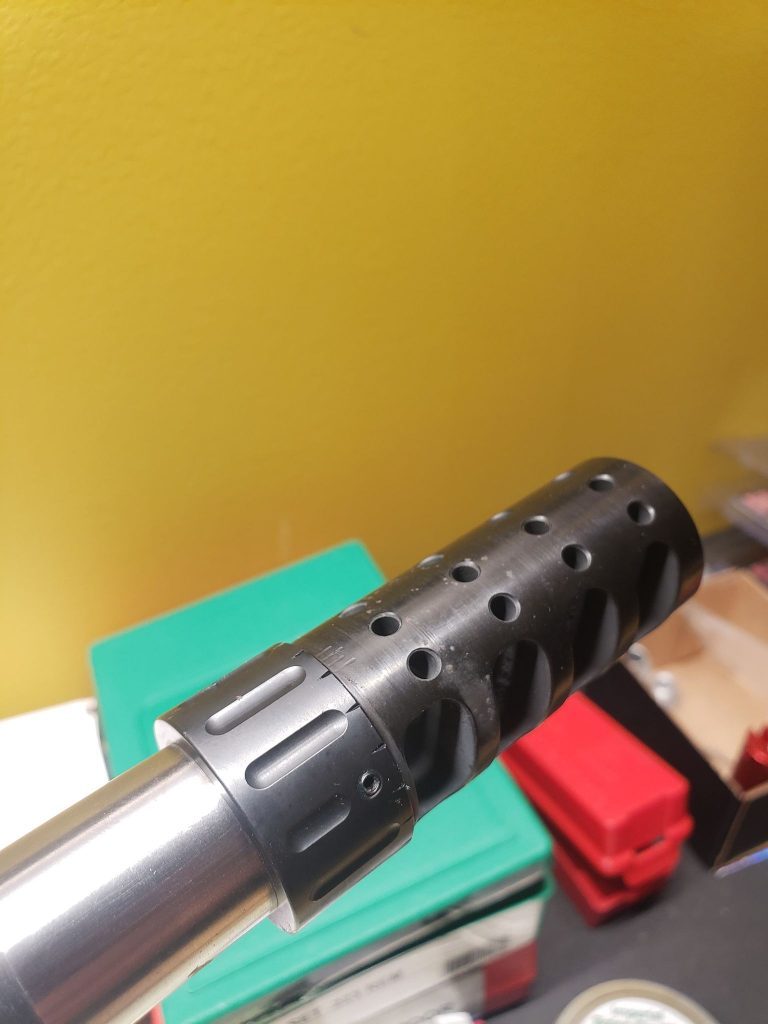
“I am jumping around targets, what is going on? My data was on and now I am all over the place.”
Oftentimes the shooter can jump the gun and now start reworking their data, however, this should be last on the list. When things start going wrong look at the most simple things first. “Is everything on my gun in the same spot as when I installed it and zeroed?” or in simpler terms, “Is everything still tight.”
At the last match I attended this problem came up, twice. Once with another shooter when the picatinny rail on his action came loose. This shooter was cleaning stages until all of a sudden he was getting zeros. He instantly went to grab the scope, “is that tight in the rings, are the rings tight?” Everything was good. Then he saw it, the rail was loose. This is directly where the scope is mounted. There ya go. With a little bit of play, the recoil can double that play and cause changes in impact that will not be consistent.
The other instance was my own. The muzzle brake. When I think about muzzle brakes my first thought goes to “is there carbon build up impacting the bullet.” This is due to a pretty great shooter having issues a couple years ago. He couldn’t figure out why he was all over the place and thought his muzzle brake was loose, turns out there was just a healthy amount of carbon that the bullet was cutting through each time he fired. This match and for myself though, it was something else. The muzzle brake was totally loose.
Now, this is only one persons fault, my own. Not the muzzle brake companys, not the gunsmiths, my own. Muzzle brakes are such an easy thing to check for tightness. We do it on our AR’s, why not on these guns. It is 100 percent my fault and I paid the price for it. I went a whole day at a two day match jumping around targets, being half a mil high at 200 yds, just crazy things. Nearing the end of the second day I was ready to start reworking my data. “Maybe the ammo started heating up, maybe my ballistics chart wasn’t accounting for some environmentals, etc etc.” Right before I was starting to sit down and redo it all, someone noticed the straight ports on my brake canted to the side. He stated, “well there is your problem, your brake is spinning.” Sure enough, it was so loose I could spin it with my fingers with no tension. After tightening it up, the next stage I ended with a 6 instead of a 1. Frustrating to say the least considering I only had one stage left of the whole match.
Going forward there are two things you want to be sure to check off and on with your muzzle brake, tightness and carbon build up.
Right now I am running the ACE Muzzle Brake from Impact Precision Shooting. It has worked wonders on recoil management with a 6.5 Creedmoor. Plus, it takes the work and time off of my gunsmith due to being self timing. It has a lock nut plus three hex screws that locks the brake onto the lock nut.
Tightness
Ensuring that your muzzle brake is tight and in the same spot as when you installed it and zeroed is crucial to keeping a consistent point of impact. When shooting with the loose muzzle brake my POI was all over the place. It screwed up the trust in my data and wind calls. After tightening, I was right back where I should be.
Follow the instructions of the brake when it comes to installation. Many have mentioned extra loctite, tightening it down tighter, getting a different brake, even craziness such as rocksetting it. Yikes. The reason that you don’t want to permanently tighten the brake on is due to the need of being able to clean the brake yourself. You want to be able to remove the brake by hand or with a tool that your manual states so that you can clear it of any obstructions, such as carbon. Also, if there are small hex screws such as on the Hawkins, you want to be careful with how much torque you are using so you don’t strip those out. Loctite will add to that torque.
Things come loose over time. I ran this gun a season and a half and was doing a lot of shooting in wild environments with no issues. It just happened that the hex screws walked out and the collar came loose. It happens, and it is only my fault for not checking it every now and again.
Carbon Build Up
Just as we should be checking the brake for tightness, carbon build up is a good check as well. Below is a great article on how to perform preventative maintenance. This is from another good company within the precision rifle world that makes great brakes, Area 419.
Area 419 Muzzle Brake Maintenance
Going forward when things start to go wrong at a match. Go to the simple things first. Check your equipment before going buckwild on your data.


Happy shooting!



